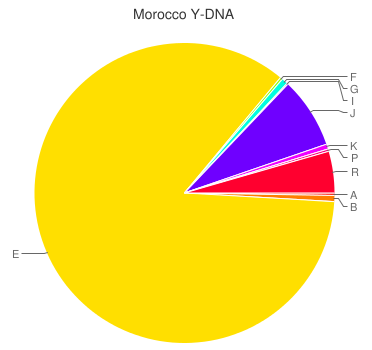
The DNA of Moroccans is a reflection of the country’s complex history, which includes indigenous North African Berber (Amazigh) populations, Arab migrations, and interactions with other groups from Europe, sub-Saharan Africa, and the Mediterranean. Moroccan DNA typically shows a mixture of various ancestries, with the following key components:
1. Berber (Amazigh) Ancestry:
- Indigenous North African DNA: A significant portion of Moroccan DNA comes from the Berbers, the indigenous people of North Africa. Berbers have lived in the region for thousands of years, and their genetic markers are a foundational part of the Moroccan gene pool.
- Afro-Asiatic Lineages: Berbers are linked to other Afro-Asiatic groups, with specific genetic markers that are distinct to North Africa.
2. Arab Ancestry:
- Middle Eastern Influence: Arab migrations to Morocco began with the Islamic conquests in the 7th century and continued with subsequent waves of migration. Arab DNA is prevalent in Morocco, especially in urban areas, where Arab culture and the Arabic language dominate.
- J1 Haplogroup: One of the notable genetic markers associated with Arab ancestry is the Y-chromosome haplogroup J1, which is common among Arab populations and found in many Moroccans.
3. European Influence:
- Mediterranean and European DNA: Over centuries, Morocco has had interactions with Europe, including through trade, conquest, and colonization. These interactions have left traces of European ancestry in the Moroccan gene pool, particularly from southern Europe, such as Spain and Portugal.
- Historical Contact: The Phoenicians, Romans, and later the Spanish and Portuguese during the Reconquista period contributed to the European genetic influence in Morocco.
4. Sub-Saharan African Influence:
- Trans-Saharan Trade: Due to Morocco’s proximity to the Sahara and its involvement in the trans-Saharan slave trade, there is also a genetic contribution from sub-Saharan Africa. This influence is more pronounced in certain regions, particularly in southern Morocco.
- E1b1a Haplogroup: This Y-chromosome haplogroup is commonly associated with sub-Saharan African ancestry and is present in some Moroccan populations.
5. Other Minor Influences:
- Jewish Ancestry: Morocco has a long history of Jewish communities, with many Jews living in the country for centuries until mass emigration in the mid-20th century. Some Moroccans carry genetic markers linked to Sephardic Jews.
Conclusion:
Moroccan DNA is a mix of indigenous Berber, Arab, European, and sub-Saharan African ancestry. This diversity reflects the country’s long history as a crossroads of various cultures and peoples, making the genetic makeup of Moroccans rich and varied. The exact proportions of these ancestries can vary significantly depending on the region within Morocco and individual family histories.
4o
Was this helpful?
0 / 0







